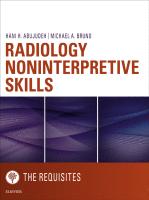Physical Address
304 North Cardinal St.
Dorchester Center, MA 02124

Introduction The Digital Revolution began in the latter half of the 20th century with the first uses of digital computers and data storage. The 1970s saw the development of the first microprocessor, Intel’s 4004, which marked the advent of the…

You’re Reading a Preview Become a Clinical Tree membership for Full access and enjoy Unlimited articles Become membership If you are a member. Log in here

Introduction Historically, to be successful in their professional careers, radiologists must train intensively for years. They must master a daunting amount of clinical material, pass comprehensive tests, and meet a wide array of challenges in their training. That has not…

Prologue To gain a more meaningful understanding of the current state of affairs with regard to medical malpractice litigation in the United States, we begin by looking back at certain events that have brought us to the present. England, 1765…

Communication in Emergency Radiology Physician-to-Patient Communication Physician-to-patient communication is a unique challenge for radiologists. Radiologists and patients often have isolated encounters, without any prior patient-physician relationship established. Most radiology services, including an emergency radiology service, do not schedule dedicated clinic…

Although many of the quality and safety discussions throughout this volume are applicable to all aspects of radiology including the imaging of children, there are several topics that are especially critical or unique to pediatric patients including radiation reduction, sedation,…

Safety Culture and Teamwork in Interventional Radiology The practice of interventional radiology (IR) is distinct from that of diagnostic radiology (DR) in that IR is able to treat patients with a wide variety of vascular and nonvascular disorders. Inherent in…

Evolution of Computed Tomography Technology Computed tomography (CT) plays a major role in the practice of medicine. CT was invented by the British scientist Sir Godfrey Hounsfield in 1972 at Electric and Musical Industries research laboratories. Since its invention, CT…

Introduction Magnetic resonance imaging (MRI) is used in the diagnosis of patients with many conditions, and while the interpretive skills necessary to appropriately interpret the MRI images are complex, so too are the noninterpretive skills. Many of these issues come…

Bioeffects of Ultrasound The benefit of diagnostic ultrasound as an imaging modality in clinical practice cannot be overstated. Avoiding the radiation of radiography and computed tomography and the restrictive nature of magnetic resonance imaging coupled with the portability of ultrasound…